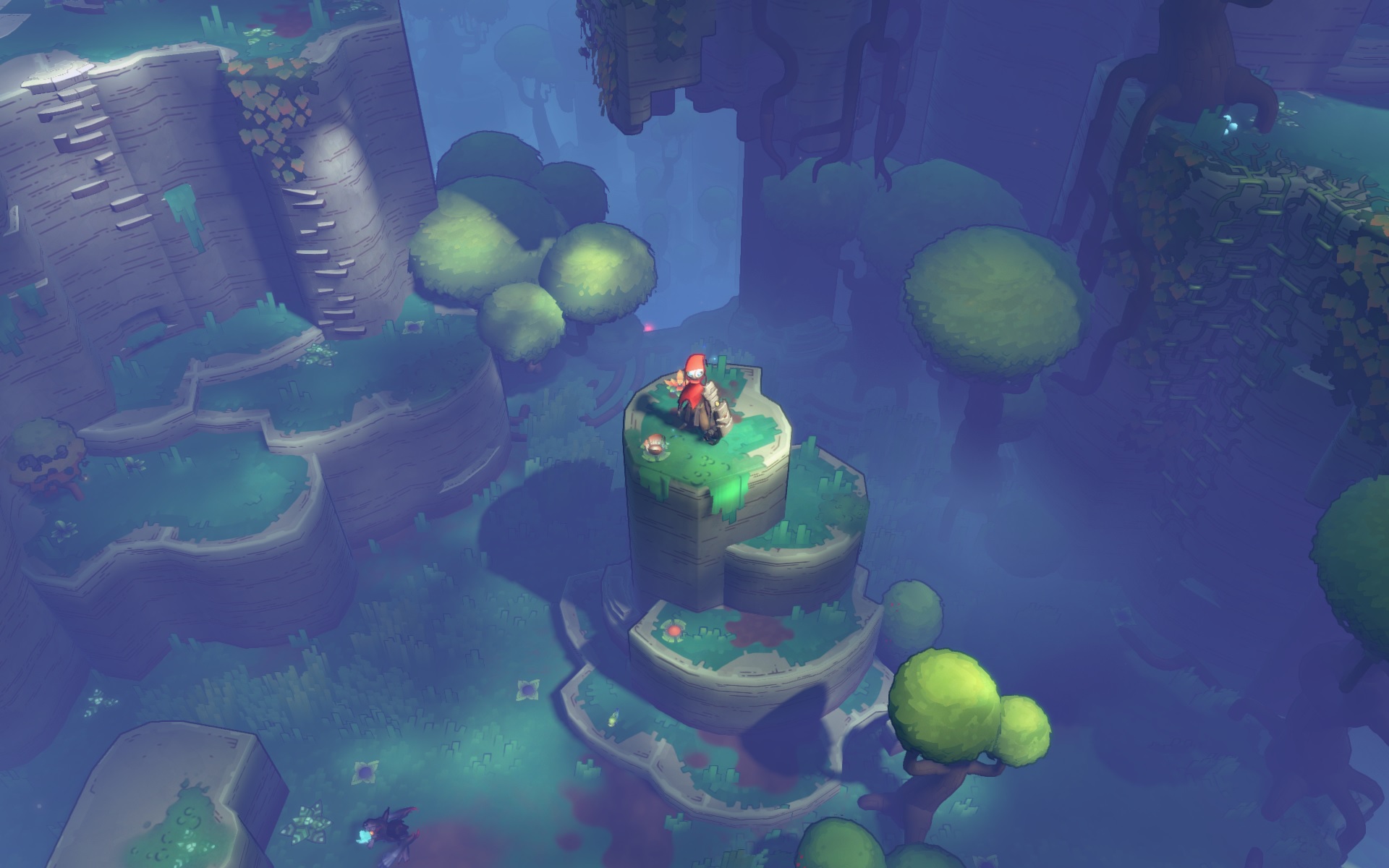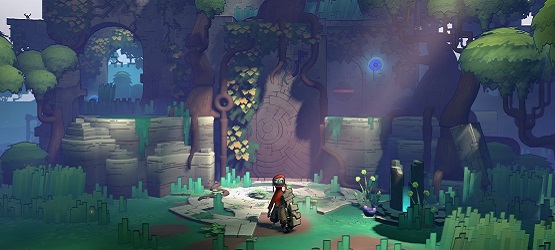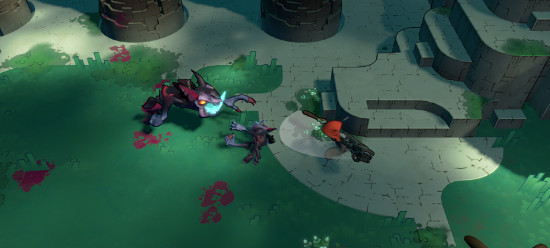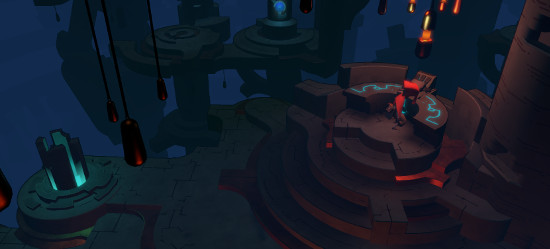Games have so many ways of jolting your brain with things that pop and spark when you press a button or click a mouse. Hooray, You got a new piece of loot. Awesome, your grenade destroyed that wall. Radical, you finished a level and earned tons of tinging coins. It can get really overwhelming.
It’s rare to find games that aren’t built to force your attention on them every few seconds. The kind of games that present themselves and ask, without actually saying a word, for you to engage and explore. So, to play a game like Hob, coming from Runic Games, the developer responsible for Torchlight, a series in one of the most egregiously attention-grabbing genres, I was taken by how quiet it was.
Modes of Play
Even on the PAX Prime 2015 show floor, where at least five other game soundtracks thump in the background at all times, Hob’s confidence and bold, cel-shaded, fantasy art style stuck. The camera is pulled in on the top of the red-cloaked main character, with alternate paths leading beyond its edges, teasing you to take them. You can walk or run to them, studying the grass and the trees and the rock formations on your way. You do, because it’s on you to search for a purpose, since the game doesn’t overtly point you in a direction. In the demo, there was only one route that brought you deeper into its world, but Hob understands that player interaction can be silent and internal. It understands that surveying its serene, symbol-etched environments can be progression on its own.
That contemplative trance is broken in the game’s combat, but broken carefully within the demo’s larger sense of pacing. Runic Games CEO Max Schaefer told me the team is trying to balance the succession of exploration, combat, and puzzles so that none of them stretch out too far. The demo’s battles weren’t overly busy, with only a few creatures leaping toward me at a time. You swipe them away with your sword, dodging and strafing out of their attacks. It had a simple toolset and enemy design that was readable in the thick of the unavoidable tension of combat. How, or if, Runic adds complexity to this remains to be seen; the demo was only reflective of the game’s pre-alpha state.
The puzzle that came next, while simple, demanded the same level of observation. It was both a challenge for the newly introduced sprint ability as well as a subtle way to illustrate the strange technology that grinds underneath the otherwise-natural-looking landscape. That layering of information and interaction adds texture to Hob’s simple mechanics that will hopefully be spread throughout its length.
Going Up
The magical grappling hook you eventually find is a good example of something that was happening throughout the demo. It’s also something that might not happen as quickly in the final release, given that what I played was not the beginning of the game. Either way, there was a focus on teaching you the extent of its mechanics that suggest a philosophy that drives the rest of the game. The grappling hook is just that when you first come to it. It pulls you toward unreachable platforms. Later in the demo, it did the opposite: pulling things off of solid objects. In a fight with a lanky, towering creature, I had to tear off armor around its legs to open it up for damaging attacks. Because of its necessity in that encounter and previously in the jumping segments, its uses are locked in my memory, a clear tool to potentially be combined in later puzzles and combat.
One to Watch
Unfortunately it’s impossible to tell where Hob will take these compelling pieces of a game that, combined in the demo, appeared to be more-than-competent, despite its early state. It’s devotion to your curiosity and growing understanding of its world seems certain. Hob, unlike a lot of the bigger, louder games right now, earns its confidence through silence and careful use of tension and puzzle-solving. It’s magnetic without sacrificing its tone, and I’m willing to get pulled right back in.
PAX Prime 2015 Hob Preview
-
Hob 1
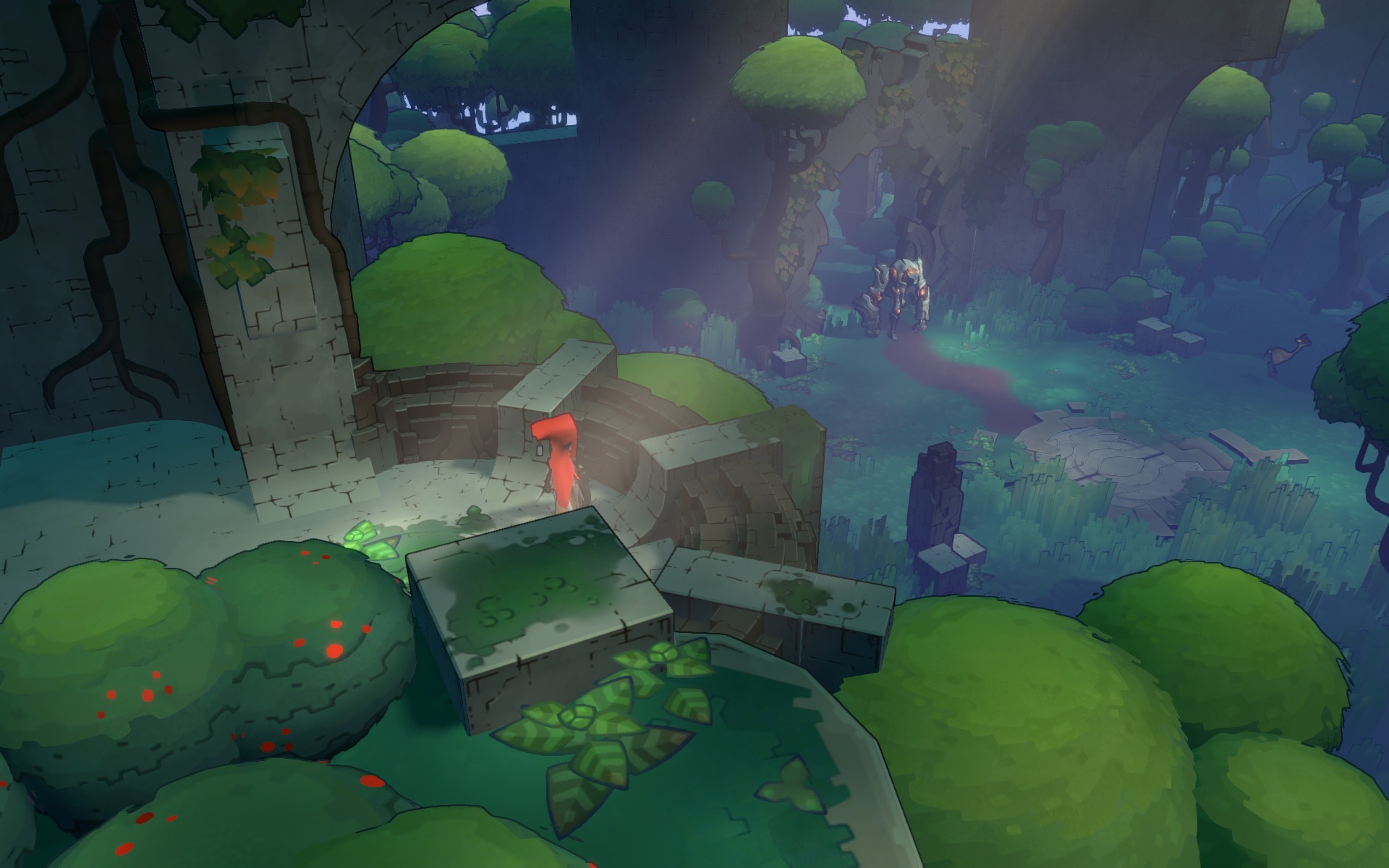
-
Hob 2
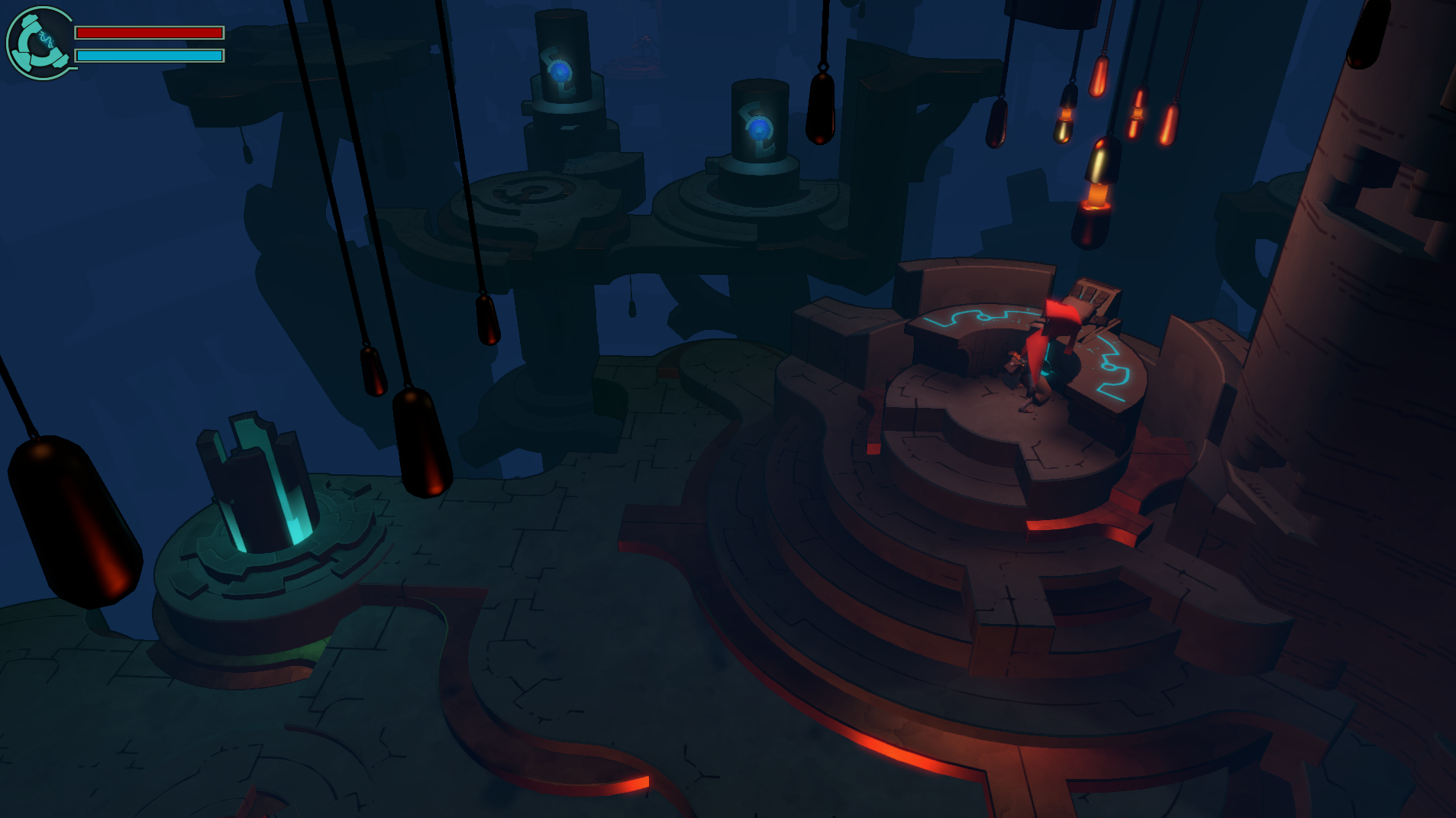
-
Hob 3
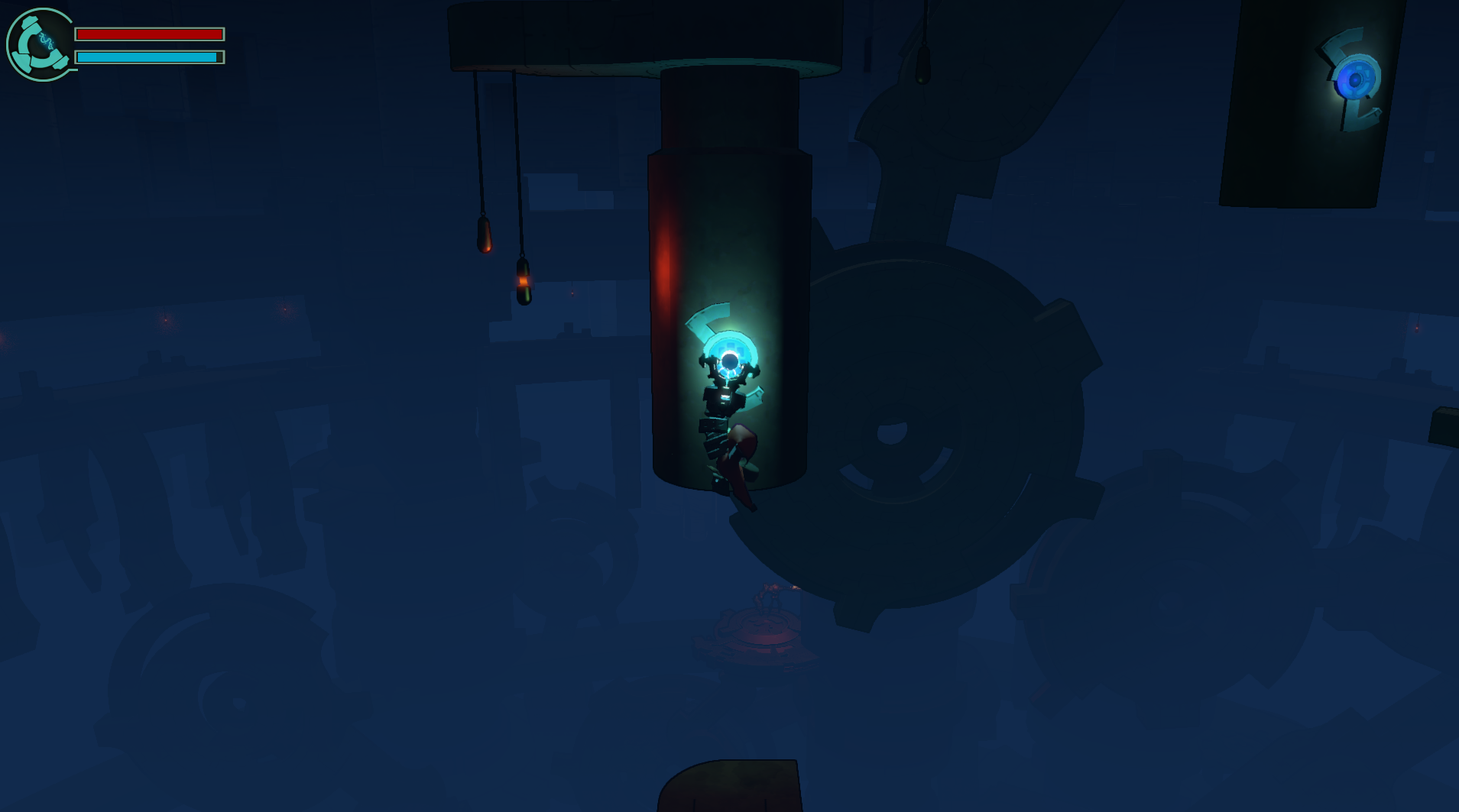
-
Hob 4
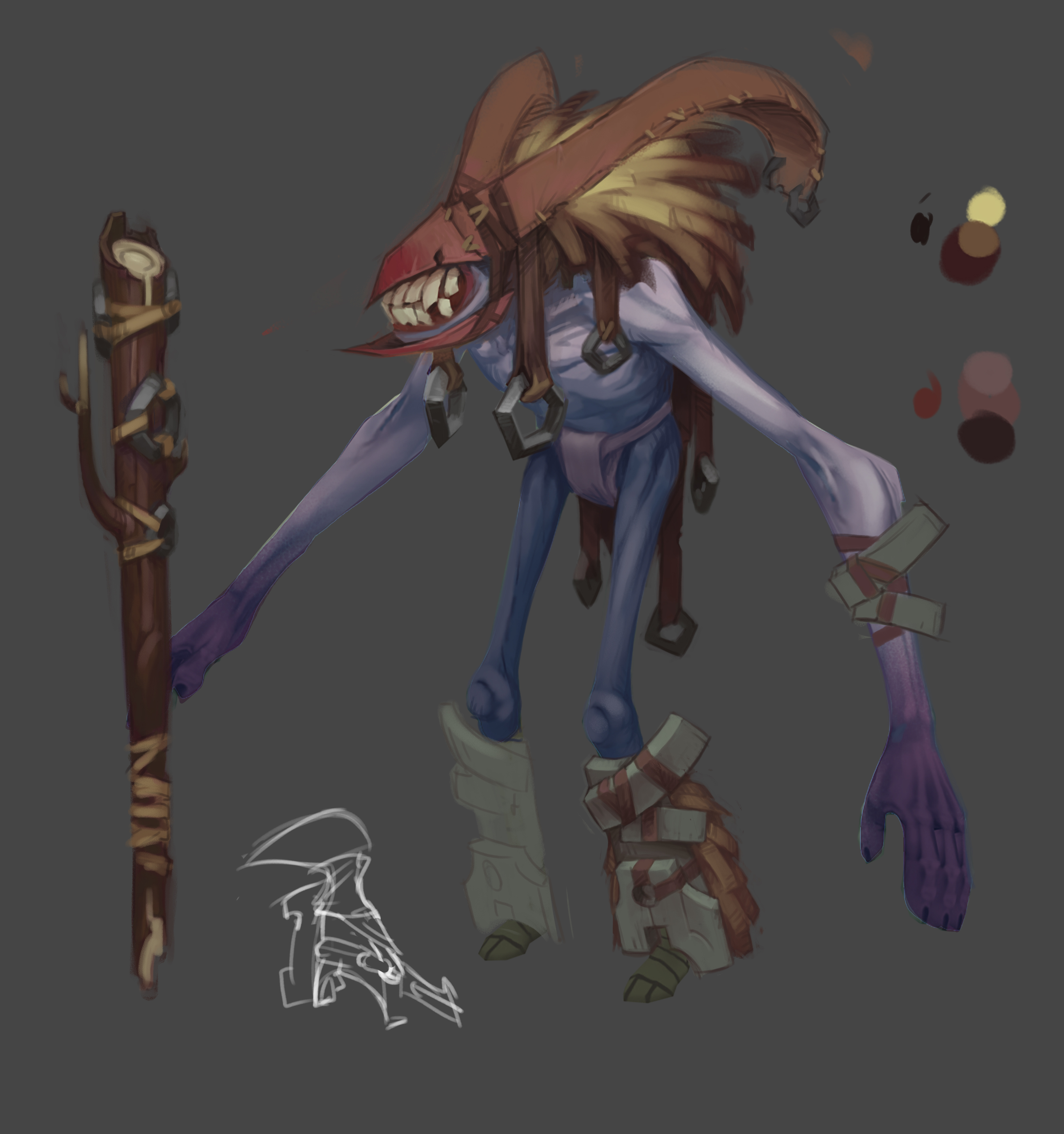
-
Hob 5
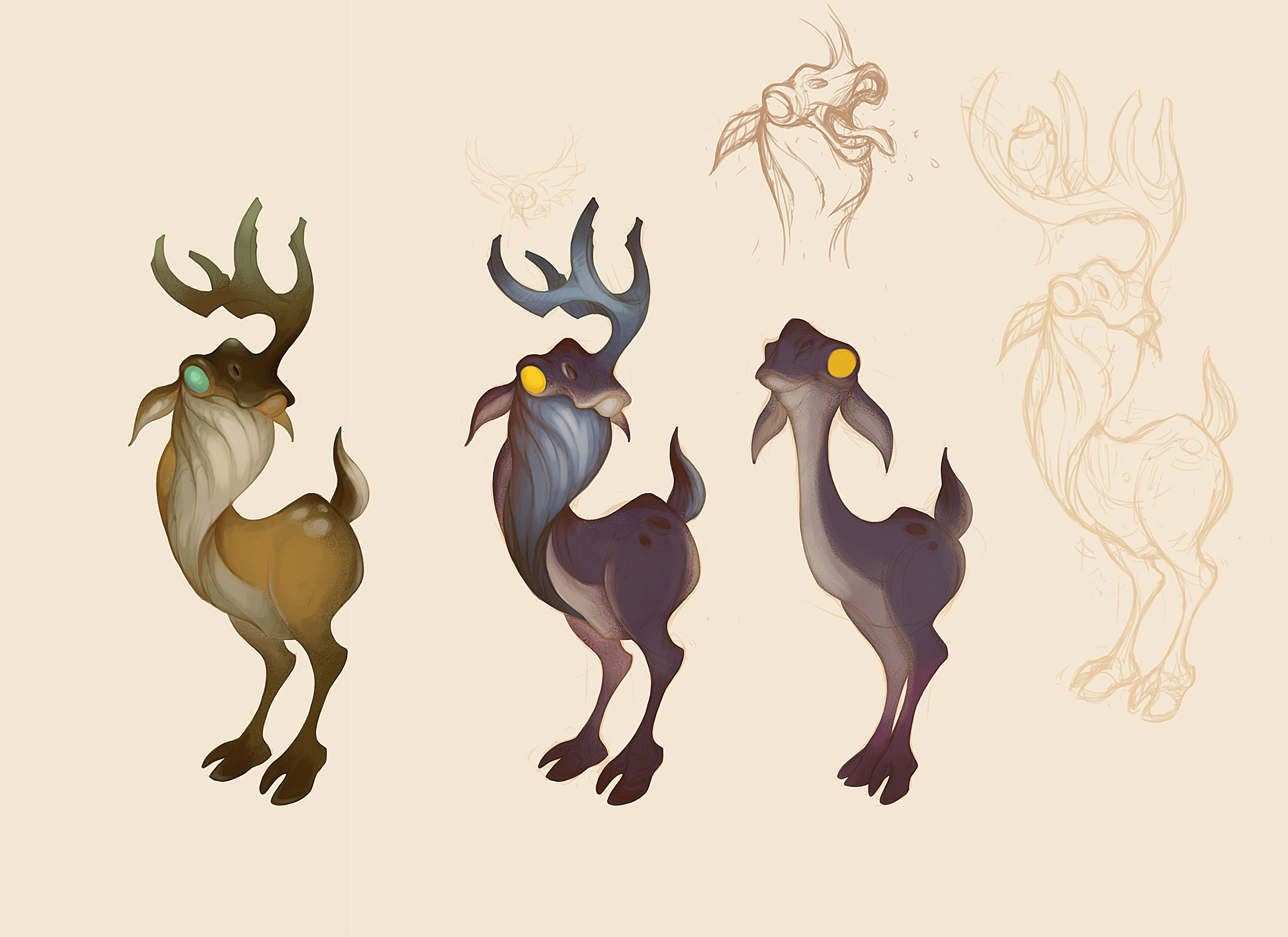
-
Hob 6
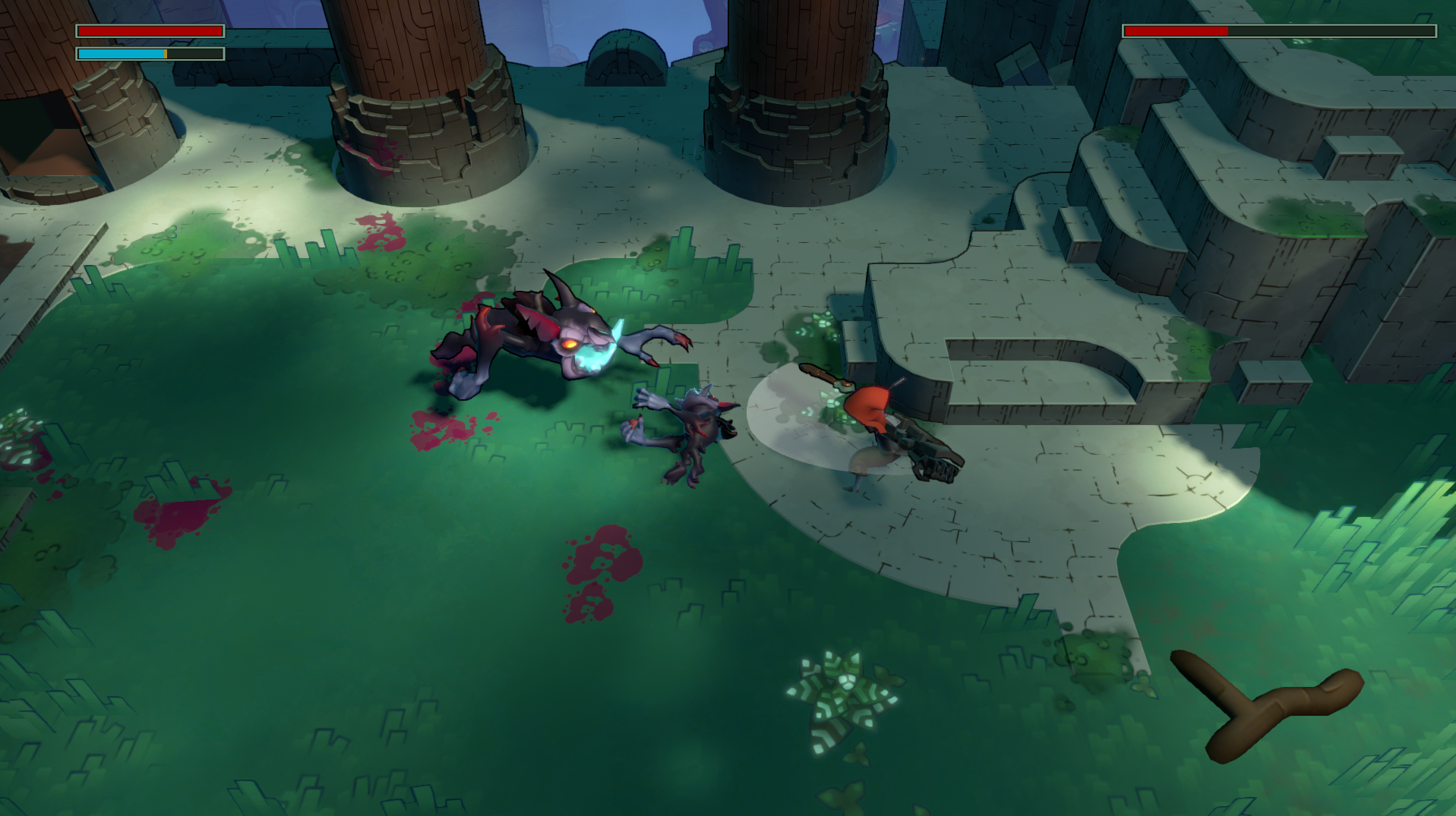
-
Hob 7
